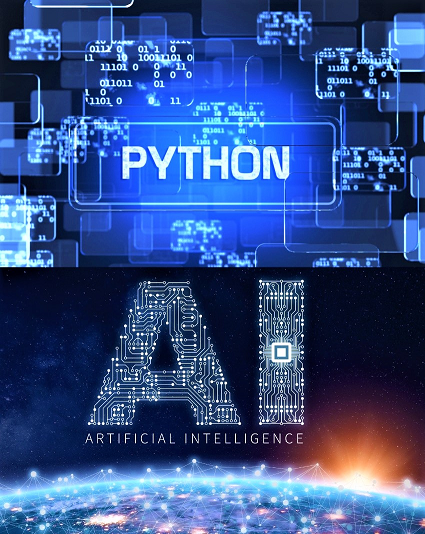
Artificial intelligence is one of the most important topics in computer science. With the help of this science, machines can be made intelligent and used in various fields. We need to use programming to implement concepts related to artificial intelligence. Python is one of the most popular programming languages in this field. Its main strength comes from its libraries which some of them are so great that they make it possible to do almost anything with Python.
What is Artificial Intelligence?

Defining artificial intelligence is not an easy task, because there are many different definitions of intelligence. But the simplest one of artificial intelligence is a machine or system that shows an intelligence like that of humans in different conditions. In other words, the machine that can plan, learn, think, have the ability to solve a problem, and ultimately interact with the external environment has an AI.
Sometimes we use AI systems without realizing it. For example, Instagram uses artificial intelligence to filter off offensive comments, detect violence in videos, or suggest a post based on users’ behavior. Another example is the voice assistant, which is being used increasingly. A smart assistant, like Siri or Alexa, uses machine learning to interact with humans.
Branches of Artificial Intelligence
Artificial intelligence has many branches and is divided into different departments:
- One of its most important directions is Machine Learning (ML). In machine learning, humans determine the goal for a device. Then the machine must learn how to reach this goal. In this branch, the device always gains experience and learns new things.
- Another application of artificial intelligence is Natural Language Processing (NLP). Thanks to this branch, computers can recognize speech or write in different human languages. The most popular services that use this AI technology, and you may know it, are Google Translate and the anti-spam service.
- Machine Vision (MV) is one of the most attractive branches of artificial intelligence. We can view it as a human vision, but it has no limits. For example, human vision cannot see behind a wall or at great distances, but machine vision can! In this field, we deal with a variety of concepts such as converting analog images to digital images, signal processing, etc.
- Robotics is one of the most important branches of artificial intelligence in the world. Robots are still very different from what we see in the movies, but they are growing rapidly and they have a role now in sensitive and important areas: Surgical robots that perform their tasks better than humans, flying robots, and firefighting robots are all made with artificial intelligence.
Python and artificial intelligence
Years ago, people working in artificial intelligence and machine learning would have had to do various things manually. That is, they had to first analyze the algorithms and then implement the various formulas and reports. Combining these tasks was a long and tedious process, and in many cases, it was accompanied by an error. But today, with the growth of various programming languages, libraries, and frameworks based on them, this is much easier than before.

Python is currently one of the most popular programming languages in the world. its popularity is not accidental, and there are many reasons for its usage. One of the main reasons for using this language is the simplicity of learning it. Artificial intelligence and its branches have their own complexities, and experts in this field cannot spend much time learning the complexities of a programming language. It is also very flexible and supports a variety of programming methods.
Python libraries for artificial intelligence

Python’s popularity in various fields has led developers to create many libraries for this language. With these libraries, Python AI users will not have to worry about complex programming and structures: developers already designed and programmed almost everything they need!
Scikit-learn
Scikit-learn is one of the best machine learning libraries in Python. This library handles basic algorithms for this field well. We use Scikit-learn for linear and logistic regression, clustering, classification, etc.
Pandas
Pandas is an open-source library published under the BSD License. This library, in addition to its easy operation, is also very efficient. We use Pandas to analyze data trying to bridge the gap in Python with modeling and analyzing data. Furthermore, Pandas, along with other deep learning and machine learning libraries, is gaining more power.
TensorFlow
In 2010, Google formed a research team in the field of artificial intelligence and deep learning. The TensorFlow Library is one of the group’s achievements, published in 2015. Google uses this library for its research and products. TensorFlow has dedicated itself to a wide variety of operating systems (Linux, Windows, Mac, etc.).
Matplotlib
Matplotlib is a very useful library for creating infographics. With it, you can design a variety of 2D shapes, graphs, etc. After analyzing your various information, you can use infographics to make it more readable and understandable. Matplotlib helps us get tangible output from our data.
Conclusion
Artificial intelligence has a bright future. This field of computer science is still maturing and there are many unresolved issues to this day. There are several advantages to choosing Python for an AI professional. By choosing this language, one can focus more on algorithms and problems in the field of work rather than spending time on the programming language itself. Simplicity, rapid development, and flexibility make Python a great option for working in a wide variety of areas of artificial intelligence.
Feel free to leave a comment or to Contact Me for an open discussion!
